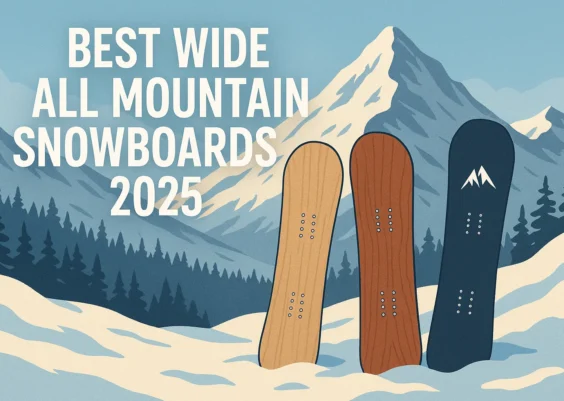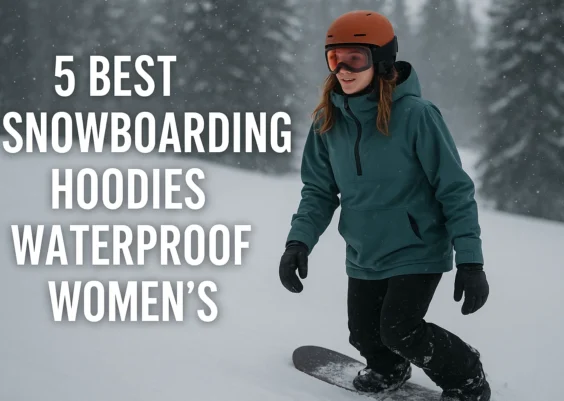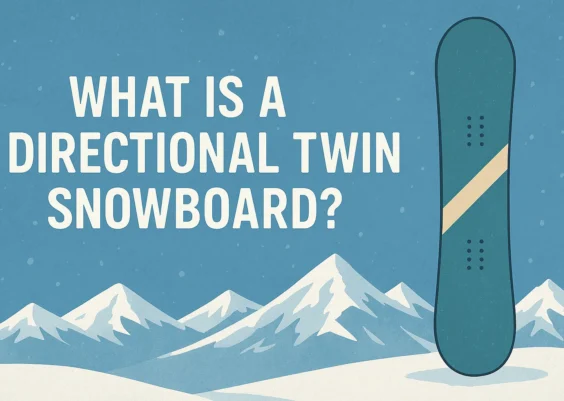Quick Facts
- Bibs cover chest to shoulder, pants stop at the waist.
- Waterproofing: both range from 10k–20k mm in quality gear.
- Breathability: common ratings are 10k–30k g/m²/24h.
- Warmth: bibs add chest insulation, pants rely on layering.
- Weight: pants average 700–900 g, bibs 900–1200 g.
- Price: pants start around $100, bibs often $150+.
- Use: pants suit park riders; bibs suit powder and backcountry.
Are bibs or pants better for snowboarding? The answer depends on how you ride and where you spend most of your time on the mountain.
Bibs offer more coverage and keep snow out, while pants feel lighter and are easier to adjust during breaks. Riders in deep powder often lean toward bibs, but park and resort riders still prefer the flexibility of pants.
Comfort, layering, and style also play a part in the decision. By understanding the strengths of each option, you can choose gear that matches your conditions and riding style. Let’s break it down and see which fits your needs best.
What’s the Difference Between Snowboard Bibs and Pants?
Snowboard pants look like regular winter pants with waterproofing, insulation, and reinforced cuffs. They stop at the waist and often include belt loops or adjustable waist tabs. Pants are quick to put on, easy to size, and work well with most jackets.
Bibs extend higher, covering the chest and using suspenders to stay in place. This design keeps snow from sliding inside during falls or when riding deep powder. Bibs usually include extra pockets around the chest and sides, giving more storage than pants. The trade-off is added weight and warmth, which some riders find restrictive.
Both options use similar fabrics and technologies. Waterproof ratings range from 10k–20k mm, and breathability often reaches 10k–30k g/m²/24h in mid to high-end gear.
Are Bibs or Pants Better for Snowboarding?
Choosing between bibs and pants comes down to snow protection, mobility, and comfort. Bibs block snow better and add storage, while pants are lighter and cooler during active riding. Industry surveys show around 60% of backcountry riders use bibs, while 70% of park riders prefer pants. Both options are made with waterproof fabrics, but bibs usually cost more and weigh slightly more.
Comparison Chart: Bibs vs Pants
| Feature | Bibs | Pants |
|---|---|---|
| Snow Protection | High coverage, chest to shoulder | Waist height only |
| Waterproofing | 10k–20k mm typical | 10k–20k mm typical |
| Breathability | 10k–30k g/m²/24h | 10k–30k g/m²/24h |
| Weight | 900–1200 g | 700–900 g |
| Warmth | Extra chest insulation | Depends on layering |
| Storage | Chest and side pockets | Waist and thigh pockets |
| Comfort | More coverage, less flexible | Lighter, easier movement |
| Price Range | $150–$400 | $100–$300 |
| Best For | Powder, backcountry, deep snow | Park, resort, casual riding |
Which Works Best in Different Conditions?
Powder Days: Bibs are the clear choice when riding in deep snow. The extra coverage prevents snow from slipping inside, even after a fall or when sitting on the slope. Many riders also like the chest insulation, which cuts wind chill during long chairlift rides.
Park Riding: Pants dominate in terrain parks. They are lighter, less restrictive, and easier for spins, grabs, and quick movements. Breathability is also better, keeping riders cool during repeated runs and tricks.
All-Mountain: Both bibs and pants work here, but pants are often more practical for mixed terrain. You can layer differently depending on the weather, and the waist-level fit makes them easy to adjust during breaks or lodge stops.
Backcountry: Bibs win for long tours or sidecountry trips. The suspenders keep them in place during hikes, and the storage pockets hold maps, snacks, or avalanche gear. The sealed fit also helps when breaking trail in waist-deep snow.
Beginners: Pants usually feel less intimidating. They are simpler to size, cost less, and make bathroom breaks much easier – something new riders often overlook until it’s too late.
Fit and Sizing Tips
Snowboard pants fit like regular winter pants, so sizing feels familiar. Look for models with adjustable waist tabs or belt loops to fine-tune the fit. Most brands also offer regular, short, and tall lengths to match leg proportions.
Bibs need more attention when sizing. They should sit snug at the shoulders without pulling or sagging. Too long, and the straps will slide; too short, and the chest panel will feel tight. Try layering underneath before choosing a size, since bibs leave less room for bulky mid-layers.
For mobility, test movements like squats or bootstrapping your bindings. A proper fit means no pinching at the waist, knees, or shoulders, and enough space for airflow.
Key Features to Look For
Waterproofing and Breathability: Ratings around 10k–20k mm waterproofing and 10k–30k g/m²/24h breathability are common. Higher numbers mean better performance, especially in wet or backcountry conditions.
Ventilation Zippers: Look for zip vents on inner thighs or underarm areas in bibs. These let heat escape quickly during active riding or spring sessions.
Reinforced Areas: Durable fabrics on knees, seat, and cuffs protect against rips from edges, rocks, and chairlift wear. Riders who spend time in the park should pay extra attention here.
Pockets and Storage: Pants usually include waist and thigh pockets, while bibs add chest pockets. Choose based on how much you like to carry on the mountain.
Gaiters and Suspenders: Snow gaiters seal the boot line, keeping powder out. Bib suspenders should be adjustable, secure, and padded for comfort during long days.
FAQs
1. Are snowboard bibs warmer than pants?
Yes, bibs often feel warmer because they cover your chest and block drafts. They add insulation over areas that pants leave exposed. In very cold or windy conditions, this extra coverage helps, but in mild weather, some riders may find them too hot.
2. Do snowboard pants or bibs keep snow out better?
Bibs keep snow out more effectively. Since they rise above the waist, snow cannot sneak inside during falls or powder runs. Pants rely on waistbands and gaiters, which work in regular conditions but may fail if you crash or ride in chest-deep snow.
3. Which option is easier for bathroom breaks?
Pants are far easier. You simply unzip and go, while bibs require removing or lowering the suspenders and upper section. Many riders mention this as the biggest downside of bibs, especially during cold days when frequent breaks are inconvenient.
4. Are bibs more expensive than pants?
Generally, yes. Entry-level pants often start at $100, while bibs usually start around $150. High-end bibs can run $300–$400 because of added materials and features. Pants of similar quality often cost $50–$100 less, making them a budget-friendly choice for many riders.
5. Do professional snowboarders prefer bibs or pants?
It depends on their style. Backcountry riders and freeriders lean toward bibs for coverage and storage. Park riders and competitors often prefer pants for lighter weight and flexibility. Many pros own both and switch depending on the conditions and events they ride in.
6. Can beginners start with bibs, or should they buy pants?
Beginners usually find pants easier to manage. They cost less, feel less bulky, and make breaks simpler. Bibs can be overwhelming at first, though they offer better protection. New riders often start with pants, then upgrade to bibs once they explore powder or backcountry terrain.
Final Thought
Deciding whether bibs or pants are better for snowboarding comes down to what matters most for your riding style. Some riders value freedom of movement, while others want maximum coverage and storage. Think about your usual terrain and comfort preferences before making a choice. The right decision will keep you focused on snowboarding instead of adjusting your gear.




